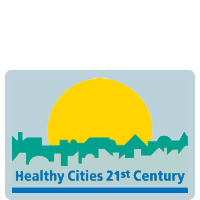The statutory duties for public authorities and for planning means that, in practice, improving health and wellbeing is a central objective and should inform the working ethos and culture of public sector organisations.
The central plank of the new plan-led system is the local development plan. In preparing these local plans, councils will need to take into account and have regard to other higher level strategies and plans. Health and wellbeing objectives are included in these higher level documents from across the Northern Ireland Executive, the DoE and other departments. These include but are not limited to the:
- Sustainable Development Strategy
- Regional Development Strategy
- Active Travel Strategy and the Regional Transport Strategy
- Public Health Strategy
- National planning policy as set out in the Planning Policy Statements, including:
- PPS 3: Access, Movement and Parking – creating accessible environments
- PPS 7: Quality Residential Environments – sustainable and quality residential designs
- PPS 8: Open Space, Sport and Outdoor Recreation – safeguard and provide access to open space and sporting activities
- PPS 12: Housing in Settlements – meet housing need and support balanced and inclusive communities
- PPS 13: Transportation and Land Use – promote sustainable and accessible transport options.
Sustainability appraisals and assessments to improve health and wellbeing
In England and elsewhere, some councils are exploring ways to include health as part of existing statutory assessments and appraisals to make the most effective use of existing processes. For example the Central Lincolnshire Joint Planning Unit has developed an integrated impact assessment (IIA) that expands the scope of a (statutory) sustainability appraisal to include health and equalities impacts.
Another approach is through separate health impact assessments (HIAs), which are designed to consider the health impacts of a policy or development proposal/ masterplan. The earlier it is commissioned, the more influence it can have. HIAs are not compulsory, but examples across the UK report that they are a good way of getting traction between planning and public health because of their potential to foster better working relationships and a shared understanding. There is no one-size-fits-all approach, and each council should explore the most effective and cost-efficient approach in accordance to its own capacity and resource constraints.
Community plans and health
The local government reforms place a duty on local authorities to prepare community plans, which should drive the priorities of a council across all departments. The community plan will set out objectives and council actions for improving the social, economic and environmental well-being of Belfast and for delivering on sustainable development goals. Examples of priorities could include:
- Strong Safe Communities for everyone by reducing crime and anti-social behaviour and residents feel safe,
- Investing in Children Young people and their Families by preventing ill health and unhealthy lifestyles.
- Healthy and Independent Living by providing better access to local health services.
The legislation on local government reform, which includes the legal framework for community planning, creates a statutory link between the local development plans and community plans.


